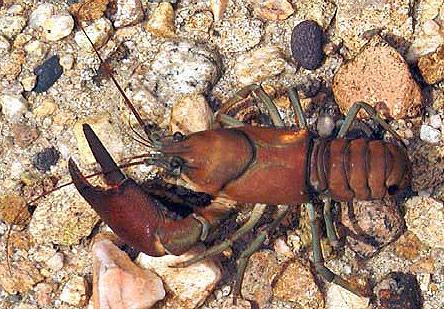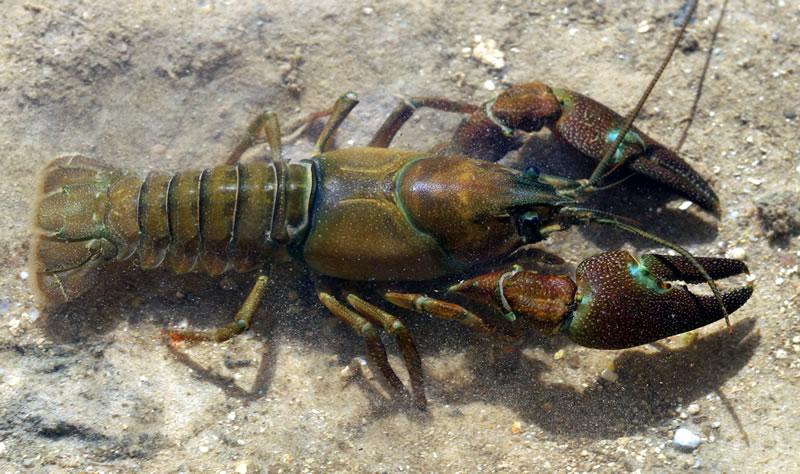A new law requiring Washington fishers to possess a recreational fishing or shellfishing license to fish for freshwater smelt, crawfish, and carp goes into effect June 6, 2024. For more information, see the crawfish fishing regulations.
Description and Range
Physical description
There is only one native crayfish species in Washington - the Signal crayfish (Pacifastacus leniusculus). This species can be identified by its uniform brownish coloration, white or light coloration of the claw joint, and the smooth surface of its carapace and claws compared to that of nonnative species.
Regulations
Rules and seasons
Native crayfish are the only crayfish that may be removed from the vicinity of the waterbody alive. If you cannot positively identify your catch as a nonnative species, the daily limit and other restrictions listed in the Fishing in Washington regulation pamphlet for native crayfish apply.
Regulations require min. size 3¼" from tip of rostrum (nose) to tip of tail.
For more information see the Fishing for Crayfish webpage.
License requirement
A new law requiring Washington fishers to possess a recreational fishing or shellfishing license to fish for freshwater smelt, crawfish, and carp goes into effect June 6, 2024.
A license will not be required to fish for carp in Moses Lake and Vancouver Lake.
Current fishing or shellfishing licenses, including temporary licenses, will be valid and existing license holders will not see any increased costs. Those 14 years and younger do not need a fishing license.
Visit the fishing license types and fees webpage for additional licensing information.
Why is a license required?
The license requirement aims to improve compliance with fishing regulations. This requirement will also provide education on appropriate gear, seasons, and species-specific limits, particularly in areas where fish listed under the Endangered Species Act (ESA) or state Species of Greatest Conservation Need (SGCN) are present.
Implementing a license requirement serves multiple purposes: it aids in regulation and monitoring of ESA-listed eulachon, also known as Columbia River smelt; increases compliance with rules regarding the retention of native and non-native crawfish; and helps enforce regulations against illegal fishing for ESA-listed salmon and steelhead in overlapping fisheries involving carp.
Why is a license required for crawfish?
Licensing for crawfish will provide the public with education that enables them to distinguish between native signal crawfish and invasive red, northern, and rusty crawfish species, facilitating the removal of invasive crawfish.
The fishing pamphlet provides educational resources on regulations and identifying species that impact fisheries or user experience. For example, correct identification of native and non-native crawfish can affect harvest. There is no daily limit on non-native crawfish and they cannot be returned to the water, however there is a daily limit on native crawfish.
Visit the smelt or carp webpages for more information about this license requirement.

